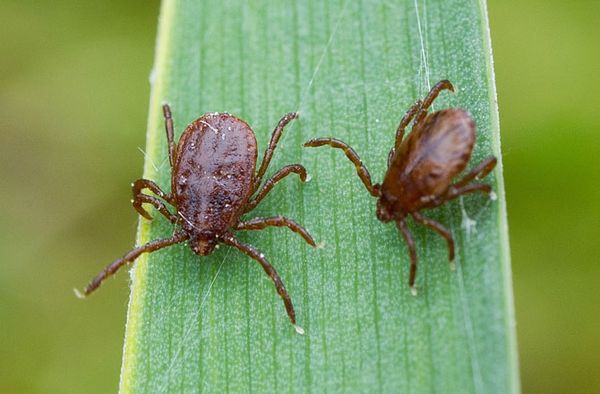
It probably sounds more like a scene from a horror movie than a scientific reality, but human eyelashes are, in fact, home to arachnids — oodles of them. Each hair follicle of the eyelids can contain as many as 25 of the creatures, and it's believed that almost every person, no matter how well-groomed, has them. Babies are born without mites, but they pick them up almost immediately from the people around them.
Since these tiny beings make themselves at home on our faces, let's get to know them a little better.
Advertisement
Many of us automatically think of spiders when we see the word "arachnid," but there are other types of eight-legged invertebrates, including scorpions, ticks and mites. It's that last category that resides in your eyelashes. More specifically, they are Demodex mites: Demodex folliculorum and Demodex brevis. And unlike other mites — such as dust mites, for example — Demodex mites have an unusual slug-like appearance.
These mites are on your lashes to munch on the oils and skin cells they find there. (D. folliculorum eats skin cells while D. brevis prefers sebum, made by oil glands.) They also reside on small hairs throughout the face, including the nose and cheeks. They have eight legs — that's why they're considered arachnids, rather than insects. The reason you don't know these follicle feeders exist is because they're microscopic. In fact, they barely exceed the size of some single-cell organisms, usually 0.3 millimeters long. So, if you wanted to observe these arachnids, you'd have to examine one of your eyelashes under a microscope.

Demodex mites live short lives of only about 14 to 20 days. Their mating habits contain a speed-dating quality — the female stays on her lash and the males hop from follicle to follicle looking for a partner. The mites can also jump onto another person's face. So, if you spend time snuggling with a loved one, you're probably providing new mating opportunities for one another's eyelash mites. When they die, they decompose in your hair follicles or sebaceous glands.
There's the issue of whether or not these critters pose a health threat. Some believe that Demodex mites can occasionally cause a type of eyelid inflammation known as blepharitis, particularly in people who are older or have compromised immune systems. The condition causes crusty, watery eyes and is usually treated by washing your eyes and using warm compresses. Rarely, these mites also cause demodicosis, which happens when face mites multiply out of control and create tiny pustules on your face and a lot of itching. This is treated with a cream or gel containing an ingredient that kills mites. The general assumption, however, is that the arachnids are harmless.
Finally, you might be wondering if these face mites have any value to humans. Some scientists think they help to keep the pores on our faces unclogged. In June 2022, scientists finished sequencing the genome of the D. folliculorum mite. The results were published in the journal Molecular Biology and Evolution. Among the many things they learned: Due to their isolated lives, with no competition from other mites with different genes, these mites have become extremely simple organisms with tiny legs powered by just three single-cell muscles. They also lack UV protection and can't make melatonin, which regulates when animals sleep and wake. However, they use the melatonin found in their human hosts to power their night-long mating sessions.
Advertisement


